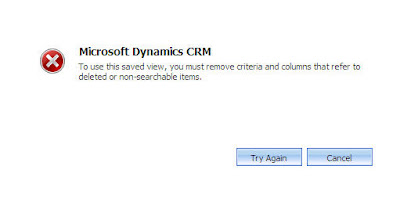Move the Microsoft Dynamics CRM databases to another SQL Server and SQL Server Reporting Services server in the same domain, and leave the Microsoft Dynamics CRM Server on the existing server
- Back up the Organization_MSCRM database and the MSCRM_Config database. To do this, follow these steps:
- On the computer that is running SQL Server, click Start, point to All Programs, point to Microsoft SQL Server 2005, and then click SQL Server Management Studio.
- Expand Databases, right-click the Organization_MSCRM database, point to Tasks, and then click Back Up.
- Under Destination, add the location to save the backup file, and then click OK.
- Repeat steps 1b and 1c for the MSCRM_Config database.
Note If you must move more than one organization, repeat steps 1a-1d for each organization database.
- On the computer that is running SQL Server, click Start, point to All Programs, point to Microsoft SQL Server 2005, and then click SQL Server Management Studio.
- Restore the Organization_MSCRM database and the MSCRM_Config database on the new computer that is running SQL Server. To do this, follow these steps:
- On the new computer, click Start, point to All Programs, point to Microsoft SQL Server 2005, and then click SQL Server Management Studio.
- Right-click Databases, and then click Restore Database.
- Under Destination to restore, type the name of the Organization_MSCRM database in the To database box.
- Under Source for restore, click From device, click the ellipsis button (...), add the Organization_MSCRM database, and then click OK.
- Click to select the Restore check box, and then click OK.
- Repeat steps 2b-2e for the MSCRM_Config database.
Note If you must move more than one organization, repeat steps 2a-2f for each organization database.
- Right-click Databases, and then click Restore Database.
- Update the following registry subkeys on the computer that is running Microsoft Dynamics CRM Server:
- configdb
- database
- metabase
To do this, follow these steps:
- On the computer that is running Microsoft Dynamics CRM Server, click Start, click Run, type regedit in the Open box, and then click OK.
- Locate the following registry subkey:
HKEY_LOCAL_MACHINE\SOFTWARE\Microsoft\MSCRM
- Right-click configdb, and then click Modify.
- In the Value data box, change the data source to the name of the new SQL Server, and then click OK. For example, the string value in the Value data box should resemble the following:
Data Source=NewSQLServer;Initial Catalog=MSCRM_CONFIG;Integrated Security=SSPI
- Follow steps 3b-3d for the database subkey and for the metabase subkey.
Notes
- If multiple Microsoft Dynamics CRM Roles are in your deployment, you must update the registry keys for all the server roles.
- If you use the Microsoft Dynamics CRM Data Connector for SQL Server Reporting Services and if you are not moving the SQL Server Reporting Services server, you must update the configdb subkey on the computer on which the Microsoft Dynamics CRM Data Connector for SQL Server Reporting Services is installed.
- Configure the Microsoft Dynamics CRM Application to point to the new SQL Server and SQL Server Reporting Services. To do this, follow these steps:
- On the computer that is running Microsoft Dynamics CRM Server, click Start, point to All Programs, point to Microsoft Dynamics CRM, and then click Deployment Manager.
- Click Organizations.
- Right-click the organization that you moved to the new computer that is running SQL Server, and then click Disable.
- Right-click the organization that you disabled, and then click Edit Organization.
- Type the new name of the SQL Server and the new URL for the SQL Server Reporting Services server.
Note This step publishes the reports that are in Microsoft Dynamics CRM to the new computer that is running SQL Server Reporting Services server that you specify. - Click Next two times, and then click Apply.
- Right-click the organization that you disabled in step 4c, click Enable, and then click Yes.
- If you are using the Microsoft Dynamics CRM Data Connector for SQL Server Reporting Services and if you are moving to a new SQL Server Reporting Services server, you must install the data connector on the new computer that is running SQL Server Reporting Services.

Comments